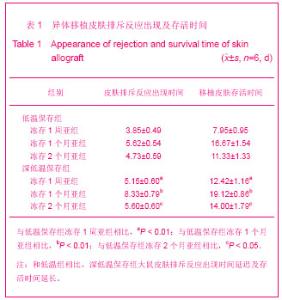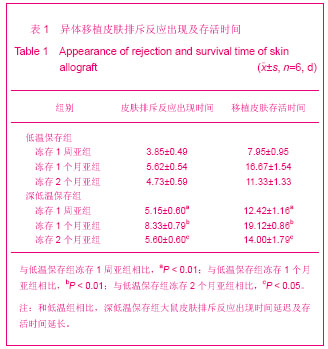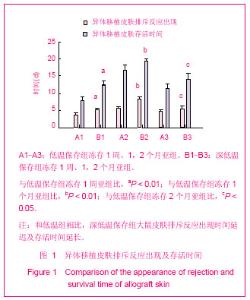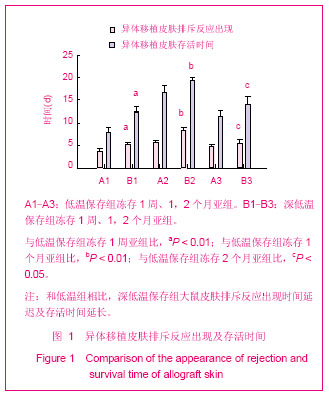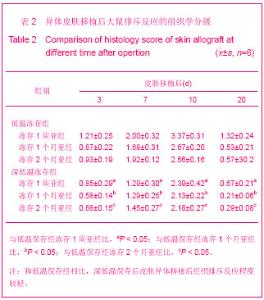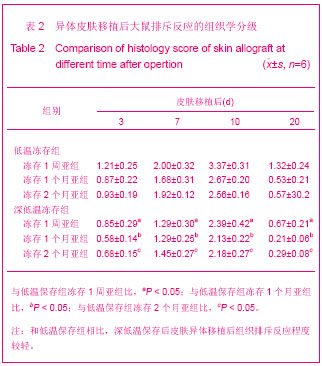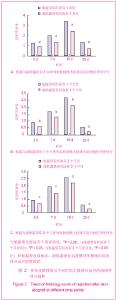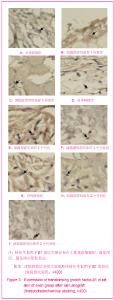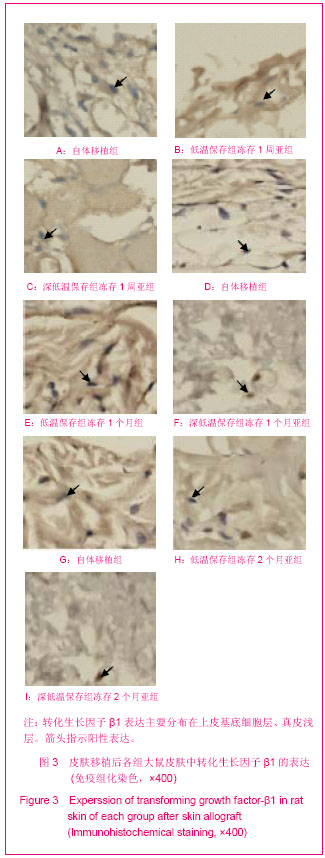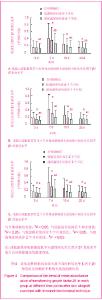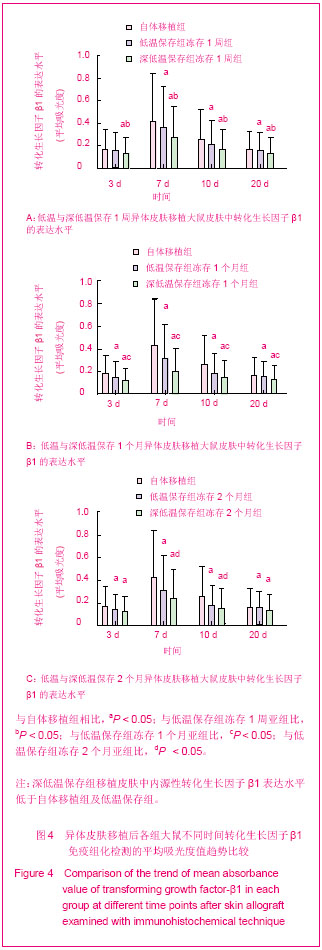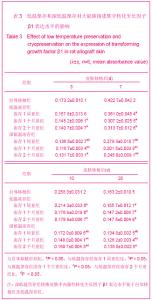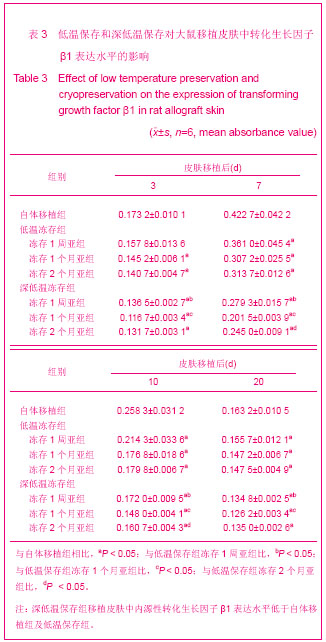| [1] Natesan S, Wrice NL, Baer DG, et al. Debrided skin as a source of autologous stem cells for wound repair. Stem Cells. 2011;29(8):1219-1230. [2] Ramanujam CL, Zgonis T. Surgical soft tissue closure of severe diabetic foot infections: a combination of biologics, negative pressure wound therapy, and skin grafting. Clin Podiatr Med Surg. 2012;29(1):143-146. [3] Ramanujam CL, Zgonis T. An overview of autologous skin grafts and advanced biologics for the diabetic foot. Clin Podiatr Med Surg. 2012;29(3):435-441. [4] May SR, DeClement FA. Skin banking methodology: an evaluation of package format, cooling and warming rates, and storage efficiency. Cryobiology. 1980;17(1):33-45. [5] Watelet JB, Gevaert P, Bachert C, et al. Secretion of TGF-betal, TGF-beta2, EGF and PDGF into nasal fluid after sinus surgery. Eur Arch Otorhinolaryngol. 2002;259(5):234-238. [6] Kishi K, Nakajima H, Tajima S. Differential responses of collagen and glycosaminoglycan syntheses and cell proliferation to exogenous transforming growth factor beta 1 in the developing mouse skin fibroblasts in culture. Br J Plast Surg. 1999;52(7):579-582.[7] O'Kane S, Ferguson MW. Transforming growth factor beta s and wound healing. Int J Biochem Cell Biol. 1997;29(1):63-78.[8] Singer AJ, Clark RA. Cutaneous wound healing. N Engl J Med. 1999;341(10):738-746.[9] Büttemeyer R, Jones NF, Min Z, Rao U. Rejection of the component tissues of limb allografts in rats immunosuppressed with FK-506 and cyclosporine. Plast Reconstr Surg. 1996;97(1):139-151.[10] Lee WP, Yaremchuk MJ, Pan YC, et al. Relative antigenicity of components of a vascularized limb allograft. Plast Reconstr Surg. 1991;87(3):401-411.[11] McGuigan FX. Skin substitutes as alternatives to autografting in a wartime trauma setting. J Am Acad Orthop Surg. 2006; 14(10 Spec No.):S87-89.[12] Felder JM 3rd, Goyal SS, Attinger CE. A systematic review of skin substitutes for foot ulcers. Plast Reconstr Surg. 2012; 130(1):145-164. [13] Ismavel R, Samuel S, Boopalan PR, et al. A simple solution for wound coverage by skin stretching. J Orthop Trauma. 2011; 25(3):127-132. [14] Landsman AS, Cook J, Cook E, et al. A retrospective clinical study of 188 consecutive patients to examine the effectiveness of a biologically active cryopreserved human skin allograft (TheraSkin®) on the treatment of diabetic foot ulcers and venous leg ulcers. Foot Ankle Spec. 2011;4(1): 29-41.[15] Castagnoli C, Alotto D, Cambieri I, et al. Evaluation of donor skin viability: fresh and cryopreserved skin using tetrazolioum salt assay. Burns. 2003;29(8):759-767.[16] Kattera S, Chen C. Cryopreservation of embryos by vitrification: current development. Int Surg. 2006;91(5 Suppl): S55-62.[17] May SR, Wainwright JF. Optimum warming rates to maintain glucose metabolism in porcine skin cryopreserved by slow cooling. Cryobiology. 1985;22(2):196-202.[18] May SR, Guttman RM, Wainwright JF. Cryopreservation of skin using an insulated heat sink box stored at -70 degrees C. Cryobiology. 1985;22(3):205-214.[19] McCartney-Francis NL, Wahl SM. Transforming growth factor beta: a matter of life and death. J Leukoc Biol. 1994;55(3): 401-409.[20] Montesano R, Orci L. Transforming growth factor beta stimulates collagen-matrix contraction by fibroblasts: implications for wound healing. Proc Natl Acad Sci U S A. 1988;85(13):4894-4897.[21] Madlener M, Parks WC, Werner S. Matrix metalloproteinases (MMPs) and their physiological inhibitors (TIMPs) are differentially expressed during excisional skin wound repair. Exp Cell Res. 1998;242(1):201-210.[22] Zambruno G, Marchisio PC, Marconi A, et al. Transforming growth factor-beta 1 modulates beta 1 and beta 5 integrin receptors and induces the de novo expression of the alpha v beta 6 heterodimer in normal human keratinocytes: implications for wound healing. J Cell Biol. 1995;129(3): 853-865.[23] Gailit J, Welch MP, Clark RA. TGF-beta 1 stimulates expression of keratinocyte integrins during re-epithelialization of cutaneous wounds. J Invest Dermatol. 1994;103 (2): 221-227.[24] Yang L, Chan T, Demare J, et al. Healing of burn wounds in transgenic mice overexpressing transforming growth factor-beta 1 in the epidermis. Am J Pathol. 2001;159(6): 2147-2157.[25] Tredget EB, Demare J, Chandran G, et al. Transforming growth factor-beta and its effect on reepithelialization of partial-thickness ear wounds in transgenic mice. Wound Repair Regen. 2005;13(1):61-67.[26] Koch RM, Roche NS, Parks WT, et al. Incisional wound healing in transforming growth factor-beta1 null mice. Wound Repair Regen. 2000;8(3):179-191. |
